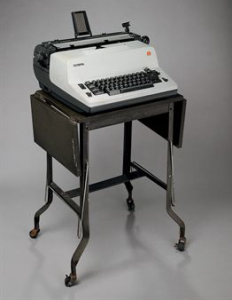Thanksgiving––the season, the week, the day of the year for giving thanks––was made more meaningful this year by the untimely passing of a family member.
 I returned a week ago from Mayo Clinic, Rochester, Minnesota. My niece, Debbie, received a kidney and heart transplant this past August. The hours-long procedure occurred one year after the famed Mayo had fitted her with a Left Ventricular Assist Device, known as an LVAD, while she awaited the two "new" organs. Debbie was a fighter. She LOVED life, and wanted very much to have the gift of new organs to replace the cumbersome LVAD. She wanted to live the remainder of her years normally in the loving surrounds of her husband and family, and her BFF, Brinkley, her dog.
I returned a week ago from Mayo Clinic, Rochester, Minnesota. My niece, Debbie, received a kidney and heart transplant this past August. The hours-long procedure occurred one year after the famed Mayo had fitted her with a Left Ventricular Assist Device, known as an LVAD, while she awaited the two "new" organs. Debbie was a fighter. She LOVED life, and wanted very much to have the gift of new organs to replace the cumbersome LVAD. She wanted to live the remainder of her years normally in the loving surrounds of her husband and family, and her BFF, Brinkley, her dog.A Delta flight on a balmy morning flew me to a crisp afternoon in Minneapolis, and from there onto Rochester via airport shuttle bus. Threshers and bailers worked the fields along the agricultural highway. I had time to focus, to gravitate, to recall times spent in gaiety and family reunion. The sun set in a beautiful mid-west sky. The air became crisper as I travelled an hour and a half south to meet news delivered in my air time that had truly "gone south."
I flew there to be with a hope-filled family who had been, over the months, assured Debbie would walk out of the hospital on her own and live a life she'd dreamed about for years. I flew there to give support, and provide physical and mental relief. I flew there to meet the WONDERFUL Mayo staff who had worked and hovered over Debbie for all these months (years). I was where I was supposed to be, and for which I had planned weeks in advance.
All the rosaries, novenas, Masses; all the crossed fingers, toes, and get-well cards––the prayers and wishes in all their myriad forms––were not in the Master's plan. While I was there, Debbie lost her heroic struggle. I was present for her, her parents, her children, and her beloved husband. We were there for each other in the end. We bowed our heads in prayers and tears with her last heartbeat.
So it's Thanksgiving––the season, the week, the day for being grateful. I am grateful, and let me count (just) four ways:
 I am thankful for being at the side of my family in their darkest hour.
I am thankful for being at the side of my family in their darkest hour. I am thankful to live in a country with the best medical care.
I am thankful for having been blessed with a healthy mind and body.
I am thankful for the opportunity to reset my priorities.
Today, the day I write this Blog Post, I am grateful for so many things––for everything. And I am grateful for the Prayer of St. Francis. Thank you.




